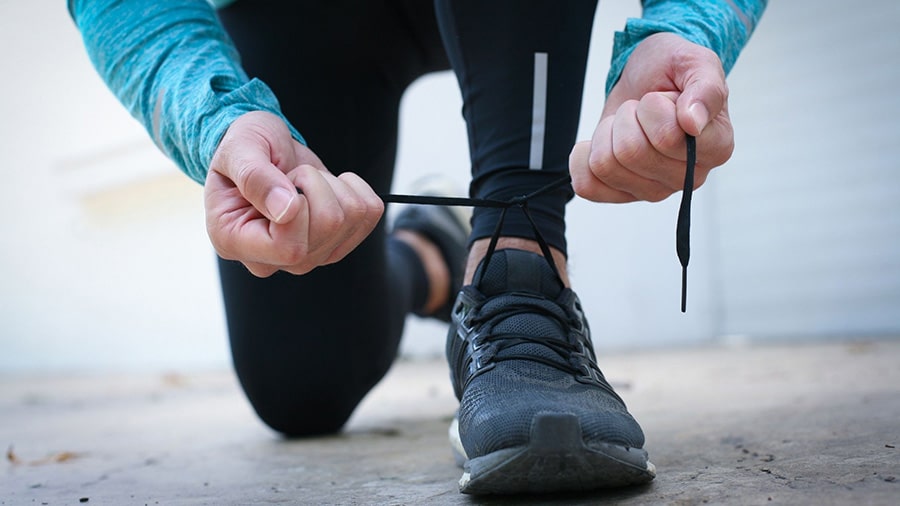Well known to all sportsmen, the test by Luc Léger is a tough and dreaded endurance test. Used in many entrance exams (police, firemen, army, etc.), it allows you to calculate your maximum aerobic speed and its VO2 max. After presenting the Luc Léger principle, I will explain how to progress and reach a high level on the day.
What is the Luc Léger test?
This physical preparation test was developed by a Canadian doctor from the University of Montreal, Dr. Luc Léger.
First, it seeks to define maximum aerobic speed (or VMA, as opposed to anaerobic capacity). The VMA allows to measure the physical condition and the cardio of a sportsman.
By extrapolation, this endurance test also aims to estimate the VO2 max. This is the maximum oxygen consumption that an individual's body can withstand during a physical effort.
The higher the VO2max, the more a runner or athlete will be able to go fast at a high intensity.
In addition to the Luc Léger, the maximum oxygen consumption can be calculated by other physical tests. One of the best known is undoubtedly the Cooper test. This test consists of running for 12 minutes to cover the greatest distance possible.
The Luc Léger test is inseparable from the famous beep. This characteristic sound signal has undoubtedly traumatized many of us...
Every minute, the running speed is increased by 0.5 km/h. The participants must be able to adjust their pace to the current level.
How this endurance test is conducted
The test can be performed on a 400-meter athletic track, on a sports field (soccer or rugby) or in a gymnasium.
To perform a Luc Léger test, it is necessary to place blocks every 20 meters around the track. In a gymnasium, it is sufficient to space 2 parallel lines 20 meters apart. This is called a shuttle test.
In addition, the organizer must have the test audio tape and the appropriate equipment to play it (a tape recorder or whistle, for example). The soundtrack of Luc Léger allows to materialize the race rhythm. It is now available on the Internet, directly on YouTube or downloadable in MP3 format.
The beep sounds to indicate that each participant must have reached the next peg or covered the 20 meters to the line.
Le Luc Léger is a progressive test. As the race progresses, the time to cover the 20-meter distance is reduced. The beeps are therefore closer together. With each new level, the heart rate of the athletes also increases.
At the first level, participants move at a speed of 8 km/h. At final level du Luc Léger, the speed is 20 km/h.
The endurance test ends when a participant fails to reach the next landmark within the allotted time. If the participant does not arrive before the beep, the previous landmark is used.
There is still a subject of debate around the Luc Léger test: that of the warm-up. In concrete terms, should you warm up before starting the race? Some people think that it is not necessary, because thewarming up is integrated in the first steps.
On the other hand, others believe that it is still preferable to jog for about ten minutes before starting. This is particularly true for the shuttle test. Indeed, the back and forth movement implies brutal changes of direction. A muscular and articular warm-up is therefore essential to avoid injury.
In what context can I take this physical test?
In college or high school
Originally, this test was designed by Dr. Léger so that PE (physical education and sports) teachers could estimate the physical condition children between 6 and 18 years old.
This VMA test has been used for a long time in schools, whether in middle or high school. It is still used today by some teachers.
During some competitions
It is also and above all used in entrance examinations for certain bodies in the French civil service. This is particularly the case for firefighters and police officers, or in thearmy.
In the policeThe Luc Leger test is used to assess the cardiorespiratory endurance of each applicant. The Luc Leger police test is different for men and women.
To obtain the minimum score of 7/20 and not be eliminated, the women must reach level 4, the men level 6. To obtain the maximum score, participants must respectively reach levels 11 and 14.
The Luc Léger scale to become a firefighter is similar to that of the national police force. If it is the same to obtain a mark of 20/20, the minimum expected is higher (level 7 for women, level 10 for men).
Within the framework of a sport practice
This stress test is very popular with physical trainers in professional and amateur sports clubs.
Whether in soccer, rugby, handball or basketball, it is generally carried out at the beginning of the season to find out the VMA of each player. This data is essential, as it allows the physical training to be individualized during the following months.
In split training, a player with a 12km/hr MAV will have to cover a shorter distance than one with a 17km/hr MAV.
In the world of runningTrail, half-marathon and marathon runners are also used to using this test to gauge their endurance capabilities.
How to prepare the Luc Léger to make a good score?
For progress at Luc LégerIn order to get the most out of your training, you should set up a training plan that includes 3 to 4 running sessions per week.
The objective of a Luc Léger training is twofold:
- increase thebasic endurance
- improve running speed as much as possible
In order to do this, it is essential to incorporate long moderate pace runs (outdoors or on a treadmill) and split sessions or fartlek to increase the heart rate.
Doing splits will help you maintain the intensity of your efforts when you are in the red.
To improve, here is a typical week of training:
- session 1 : 20 minutes jogging + 3 blocks of 10 minutes of 15/15
- session 2 : 45 minutes of jogging
- session 3 : 20 minutes jogging + 3 blocks of 6 minutes of 30/30
- session 4 : 60 minutes of jogging
In addition to running, it may be wise to do some strength trainingincluding plyometric exercisesto strengthen the muscles of the lower body.
Conclusion
The Luc Léger test is an excellent way to evaluate your physical condition. It allows you to calculate your VMA and VO2 max. For improve your performance at Luc Léger and reach additional levels, you will need to do splits and train rigorously.











One Comment
Great article! How much recovery time between split blocks?